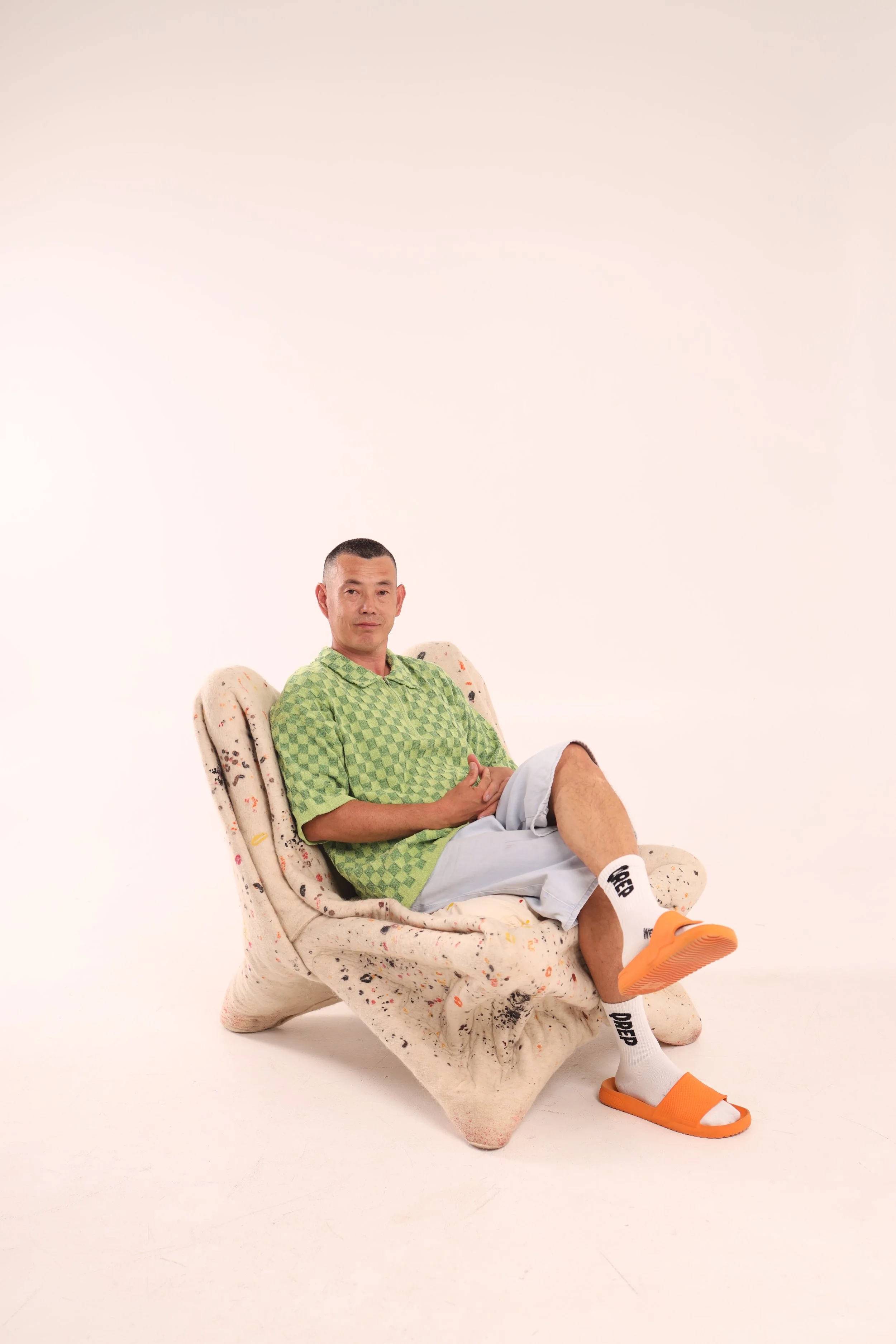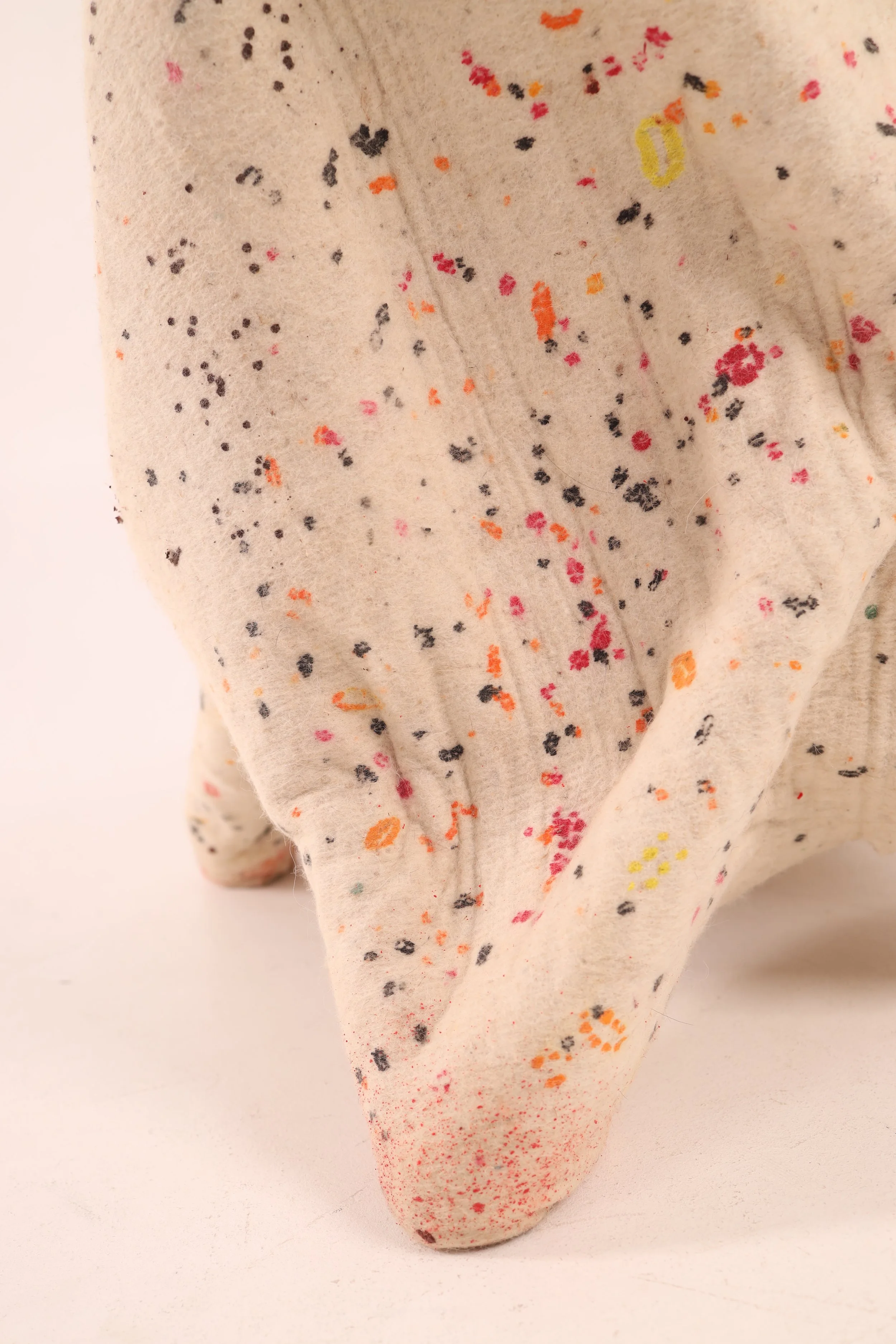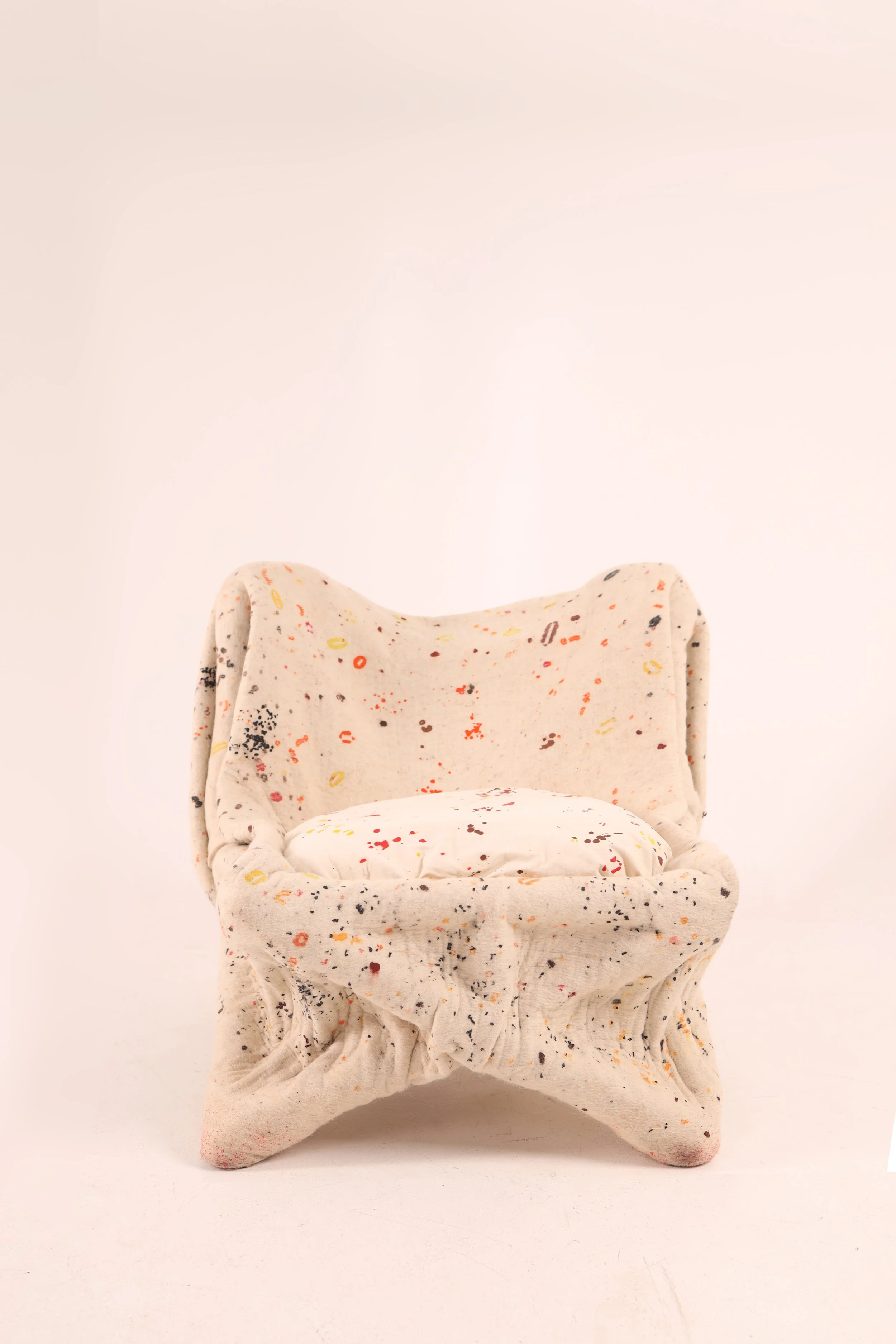A Chair from the Steppe
Daniyar Uderbekov’s 10 Nodes Chair is made of felt, a material traditionally used in Kazakhstan to build yurts (image: Daniyar Uderbekov).
Felt, folded like origami around a skeleton of reconstituted waste; wrapped in one of the oldest fabrics known to humankind, yet built with contemporary concerns for sustainability at its core. Daniyar Uderbekov’s 10 Nodes Chair represents a pivotal moment in the designer’s practice – one where he steps away from earlier, self-admitted attempts to conform to Western aesthetics and turns instead toward a deeper engagement with the materials and memory of his homeland.
Based in Astana, Kazakhstan, Uderbekov creates work that draws from the country’s deep nomadic heritage, adapting traditional technologies, materials, and culture to engage with the demands and conditions of contemporary life. 10 Nodes is an item where these ideas converge – a piece constructed from locally sourced materials, some of which have shaped life on the steppe for millennia, others that have only recently arrived. Through this layered material language, Uderbekov offers a portrait of Kazakhstan today, one that is shaped by memory, ecology, and transformation.
Uderbekov sitting in the 10 Nodes chair (image: Daniyar Uderbekov).
When describing how the 10 Nodes Chair came to be, Uderbekov recalls a recurring scene from the Kazakh steppe: sheep grazing beside the highway, plastic bottles scattered through the grass, discarded, perhaps, by workers from a passing bus, then carried further by the wind. “This is a familiar sight in Kazakhstan,” he notes, “with its vast distances between cities.” It’s an image that brings together two materials unlikely to share the same space: felt with its enduring presence of nomadic life and plastic bottles representing a creeping encroachment of industrial waste.
From this encounter, Uderbekov began to consider a new material pairing: wool from sheep that have grazed these lands for millennia, and PET plastic, a byproduct of recent decades that has begun to plague them. In his chair, the wool takes shape as felt, specifically the same dense, breathable felt used in the construction of yurts. “Felt is resistant to rain, snow, and sun; it’s breathable. A yurt made of felt is essentially a large filter that retains heat,” he explains. The properties are practical, but the material’s resonance runs deeper. This is not just fabric; it is architecture, cultural memory, and historical technology, passed from generation to generation across the steppe.
The chair has a PET plastic frame that is made from waste gathered from the Kazakh steppe (image: Daniyar Uderbekov).
The PET plastic in the chair exists as a series of modular joints, fastening a framework of wooden poles. In Uderbekov’s chair, this alien substance scattered across the steppe like industrial tumbleweed becomes not waste, but a resource. What is normally dismissed as ecological detritus is reframed as a material with potential: something to be gathered, shaped, and given purpose. It is not outlandish to imagine a future in which the steppe’s litter becomes its resource, harvested by designers with a penchant for reclamation.
Uderbekov’s use of traditional Kazakh materials grants his work a distinct presence on the global stage. “Western audiences know what felt is,” he explains, “but they're familiar with industrially manufactured felt, which isn't as pliable as handmade felt. Industrial felt is more uniform in composition – essentially a machine product.” This disconnect became apparent when exhibiting the chair across Europe, where some visitors have assumed that the surface is as hard as fibreglass or even a type of porous stone. Others were struck by the scent of the wool – an earthy trace of the Kazakh steppe that fell outside their sensory expectations. Domestically, however, the chair prompted a different kind of surprise. As Uderbekov notes, many Kazakh viewers were taken aback to see a material traditionally associated with carpets and floor coverings used in a piece of furniture, repositioned from background texture to central structure.
Image: Daniyar Uderbekov.
These contrasting responses, one shaped by unfamiliarity, the other by recontextualisation, highlight Uderbekov’s ability to work across multiple cultures. His practice is rooted in the materials and memories of the steppe, but extends outward through experimentation with form and process. By pairing ancestral substances like felt with contemporary tools such as recycled plastics, he refuses to let tradition harden into nostalgia. Instead, he treats it as a living vocabulary, one that can be reshaped, challenged, and re-read, without losing its sense of origin. In doing so, Uderbekov carves out a space that is neither wholly local nor entirely global, but meaningfully both.
Words Robert Fawley




